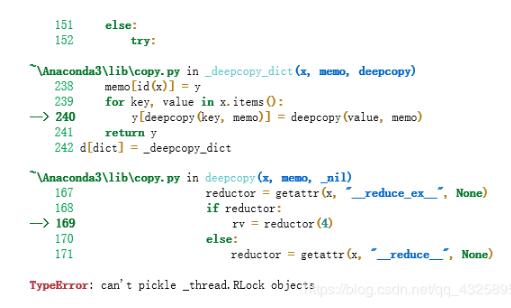我就废话不多说了,大家还是直接看代码吧!
from tensorflow.python.keras.models import Sequential, Model from tensorflow.python.keras.layers import Dense, Flatten, Conv2D, MaxPool2D, Dropout, Conv2DTranspose, Lambda, Input, Reshape, Add, Multiply from tensorflow.python.keras.optimizers import Adam def deconv(x): height = x.get_shape()[1].value width = x.get_shape()[2].value new_height = height*2 new_width = width*2 x_resized = tf.image.resize_images(x, [new_height, new_width], tf.image.ResizeMethod.NEAREST_NEIGHBOR) return x_resized def Generator(scope='generator'): imgs_noise = Input(shape=inputs_shape) x = Conv2D(filters=32, kernel_size=(9,9), strides=(1,1), padding='same', activation='relu')(imgs_noise) x = Conv2D(filters=64, kernel_size=(3,3), strides=(2,2), padding='same', activation='relu')(x) x = Conv2D(filters=128, kernel_size=(3,3), strides=(2,2), padding='same', activation='relu')(x) x1 = Conv2D(filters=128, kernel_size=(3,3), strides=(1,1), padding='same', activation='relu')(x) x1 = Conv2D(filters=128, kernel_size=(3,3), strides=(1,1), padding='same', activation='relu')(x1) x2 = Add()([x1, x]) x3 = Conv2D(filters=128, kernel_size=(3,3), strides=(1,1), padding='same', activation='relu')(x2) x3 = Conv2D(filters=128, kernel_size=(3,3), strides=(1,1), padding='same', activation='relu')(x3) x4 = Add()([x3, x2]) x5 = Conv2D(filters=128, kernel_size=(3,3), strides=(1,1), padding='same', activation='relu')(x4) x5 = Conv2D(filters=128, kernel_size=(3,3), strides=(1,1), padding='same', activation='relu')(x5) x6 = Add()([x5, x4]) x = MaxPool2D(pool_size=(2,2))(x6) x = Lambda(deconv)(x) x = Conv2D(filters=64, kernel_size=(3, 3), strides=(1,1), padding='same',activation='relu')(x) x = Lambda(deconv)(x) x = Conv2D(filters=32, kernel_size=(3, 3), strides=(1,1), padding='same',activation='relu')(x) x = Lambda(deconv)(x) x = Conv2D(filters=3, kernel_size=(3, 3), strides=(1, 1), padding='same',activation='tanh')(x) x = Lambda(lambda x: x+1)(x) y = Lambda(lambda x: x*127.5)(x) model = Model(inputs=imgs_noise, outputs=y) model.summary() return model my_generator = Generator() my_generator.compile(loss='binary_crossentropy', optimizer=Adam(0.7, decay=1e-3), metrics=['accuracy'])
补充知识:含有Lambda自定义层keras模型,保存遇到的问题及解决方案
一,许多应用,keras含有的层已经不能满足要求,需要透过Lambda自定义层来实现一些layer,这个情况下,只能保存模型的权重,无法使用model.save来保存模型。保存时会报
TypeError: can't pickle _thread.RLock objects

二,解决方案,为了便于后续的部署,可以转成tensorflow的PB进行部署。
from keras.models import load_model
import tensorflow as tf
import os, sys
from keras import backend as K
from tensorflow.python.framework import graph_util, graph_io
def h5_to_pb(h5_weight_path, output_dir, out_prefix="output_", log_tensorboard=True):
if not os.path.exists(output_dir):
os.mkdir(output_dir)
h5_model = build_model()
h5_model.load_weights(h5_weight_path)
out_nodes = []
for i in range(len(h5_model.outputs)):
out_nodes.append(out_prefix + str(i + 1))
tf.identity(h5_model.output[i], out_prefix + str(i + 1))
model_name = os.path.splitext(os.path.split(h5_weight_path)[-1])[0] + '.pb'
sess = K.get_session()
init_graph = sess.graph.as_graph_def()
main_graph = graph_util.convert_variables_to_constants(sess, init_graph, out_nodes)
graph_io.write_graph(main_graph, output_dir, name=model_name, as_text=False)
if log_tensorboard:
from tensorflow.python.tools import import_pb_to_tensorboard
import_pb_to_tensorboard.import_to_tensorboard(os.path.join(output_dir, model_name), output_dir)
def build_model():
inputs = Input(shape=(784,), name='input_img')
x = Dense(64, activation='relu')(inputs)
x = Dense(64, activation='relu')(x)
y = Dense(10, activation='softmax')(x)
h5_model = Model(inputs=inputs, outputs=y)
return h5_model
if __name__ == '__main__':
if len(sys.argv) == 3:
# usage: python3 h5_to_pb.py h5_weight_path output_dir
h5_to_pb(h5_weight_path=sys.argv[1], output_dir=sys.argv[2])
以上这篇Keras 使用 Lambda层详解就是小编分享给大家的全部内容了,希望能给大家一个参考,也希望大家多多支持自学编程网。

- 本文固定链接: https://zxbcw.cn/post/188385/
- 转载请注明:必须在正文中标注并保留原文链接
- QQ群: PHP高手阵营官方总群(344148542)
- QQ群: Yii2.0开发(304864863)
